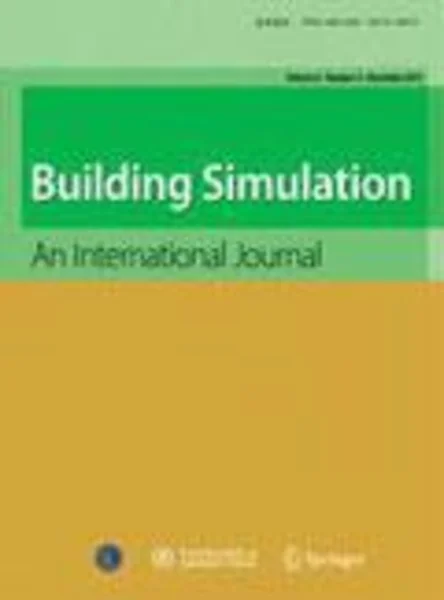-
effect of indoor buoyancy flow on wind-driven cross ventilation
جزئیات بیشتر مقاله- تاریخ ارائه: 1392/07/24
- تاریخ انتشار در تی پی بین: 1392/07/24
- تعداد بازدید: 798
- تعداد پرسش و پاسخ ها: 0
- شماره تماس دبیرخانه رویداد: -
designing for wind-driven cross ventilation is challenging due to many factors. while studies have focused on the difficulty of predicting the total flow rate and measuring opening characteristics of cross ventilation, few have investigated the impacts on the distribution of indoor air. this paper provides insights on how local heat sources can generate significant buoyancy driven flow and affect indoor mixing during wind-driven cross ventilation scenarios. measurements of air distribution were conducted by a tracer gas method for a multi-zone test building located in austin, texas, usa, along with cross ventilation flow at the openings. a computational fluid dynamic (cfd) model was also developed for this test building, which utilizes the measured flow properties at the openings as boundary conditions. resulting air distribution patterns from the cfd model were then compared to the experimental data, validating the model. further parametric analyses were also conducted to demonstrate the effect of interior heat loads in driving internal air mixing. key findings of the investigation suggest a local heat source smaller than 35 w/m2 can increase the indoor mixing during cross ventilation from less than 1 air exchange to as high as 8 air exchanges per hour. this result also suggests a typical occupancy scenario (people and electronics) can generate enough heat loads to change the indoor air mixing and alter the effect of cross ventilation.
مقالات جدیدترین رویدادها
-
استفاده از تحلیل اهمیت-عملکرد در ارائه الگوی مدیریت خلاقیت سازمانی و ارائه راهکار جهت بهبود
-
بررسی تاثیر ارزش وجوه نقد مازاد بر ساختار سرمایه شرکت های پذیرفته شده در بورس اوراق بهادار تهران
-
بررسی تأثیر سطح افشای ریسک بر قرارداد بدهی شرکت های پذیرفته شده در بورس اوراق بهادار تهران
-
بررسی تأثیر رتبه بندی اعتباری مبتنی بر مدل امتیاز بازار نوظهور بر نقد شوندگی سهام با تأکید بر خصوصی سازی شرکت ها
-
تأثیر آمیخته بازاریابی پوشاک ایرانی بر تصویر ذهنی مشتری پوشاک ایرانی (هاکوپیان)
-
چگونه توانستم میزان علاقه مندی و یادگیری دانش آموزان پایه ی سوم ابتدایی در درس هدیه های آسمان را بیشتر کنم؟
-
بازی های دیجیتال؛ گفتمان سرمایه داری و فرهنگ مصرفی
-
حساسیت سنجی پارامترهای مقاومت برشی خاک بر نیروی کششی میخها در دو حالت دینامیکی و استاتیکی در تسلیح خاک به روش میخکوبی
-
بررسی آزمایشگاهی عملکرد ضرب های دال های بتنی مسلح شده به میلگرد gfrp
-
بررسی رابطه بین هوش هیجانی و مهارت های اجتماعی با اضطراب اجتماعی دانش آموزان دختر دوره متوسطه دوم شهر خدابنده
مقالات جدیدترین ژورنال ها
-
مدیریت و بررسی افسردگی دانش آموزان دختر مقطع متوسطه دوم در دروان کرونا در شهرستان دزفول
-
مدیریت و بررسی خرد سیاسی در اندیشه ی فردوسی در ادب ایران
-
واکاوی و مدیریت توصیفی قلمدان(جاکلیدی)ضریح در موزه آستان قدس رضوی
-
بررسی تاثیر خلاقیت، دانش و انگیزه کارکنان بر پیشنهادات نوآورانه کارکنان ( مورد مطالعه: هتل های 3 و 4 ستاره استان کرمان)
-
بررسی تاثیر کیفیت سیستم های اطلاعاتی بر تصمیم گیری موفق در شرکتهای تولیدی استان اصفهان (مورد مطالعه: مدیران شرکتهای تولیدی استان اصفهان)
-
نقش زنان در دستیابی و حفاظت محیط زیست
-
فقه امامیه و بانکداری اسلامی
-
مدل سازی تاثیر پارامترهای فیزیکی سطح و سیال بر خوردگی شناورها با استفاده از نرم افزار کامسول
-
ابعاد، خصوصیات و ویژگی های هوش هیجانی از منظر اسلام
-
seismic loss assessment: the case study of the power distribution network in arak city, iran




سوال خود را در مورد این مقاله مطرح نمایید :